In memory of once glorious and powerful people, we have mysterious intricacies: the Celtic symbols. The ancient Celts believed that their ornaments possessed qualities that protected them thanks to their great mystical powers.
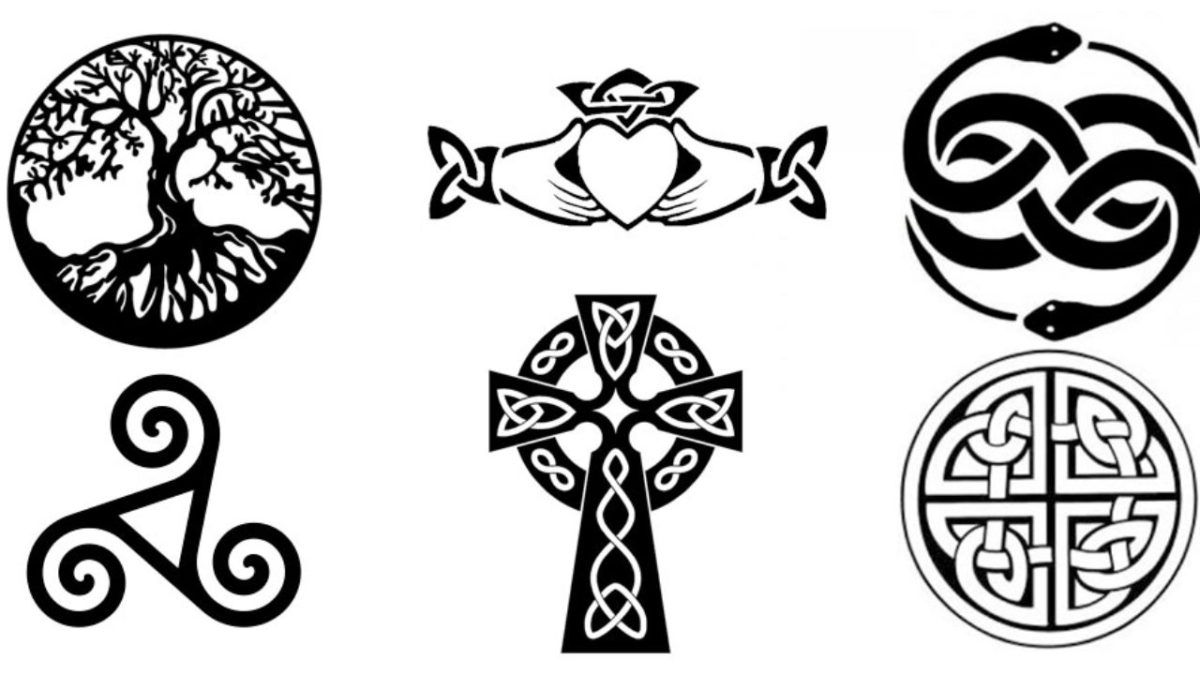
Celtic symbols
The fearlessness of the ancient Celts in combat left in our minds an image of roughnecks with little inclination for finesse. However, the Celtic civilization certainly included accomplished warriors, but also highly talented artists who have influenced the entire continent over the centuries.
When you talk about Celts, you probably think of Ireland first. Therein lies the origin of the beautiful and decorative Celtic symbols. But the area of Celtic symbols is larger than Ireland. Wales, Scotland and also parts of France have Celtic influences. We have all seen Celtic symbols, although we do not always assign them to the Celts. The Triquetra, for example, would be one of those symbols that we find in television programs like “Charmed”.
We may not always know their Celtic names, but most of the time we already know the symbols. But what do these unique symbols really mean? Everything we know about the Celts is based on oral accounts. For the Celts, written records were probably unusual, probably even forbidden. This makes them even more interesting today and their symbols even more puzzling. Celtic symbols can be found on jewelry, tombs, tablets, etc.
Celtic mythology and culture
The history of world civilization holds many secrets and mysteries. One of these secrets is the history of the Celtic people, sealed with seven seals. Having disappeared from the face of the earth, the Celts left behind a valuable heritage - their culture, which has become one of the foundations of modern European culture. Celtic symbols are considered a peculiar art, revered by many to this day.
In the old days of military activity and redistribution of territories, the Celts occupied most of Europe. The Celtic civilization, which no longer exists in modern times, is of great importance, because the heritage of the people has been revived more than once. The people were called Celts by the ancient Greeks. The ancient Romans called them Gauls, which translated means "roosters." What the Celts called themselves is not known today.
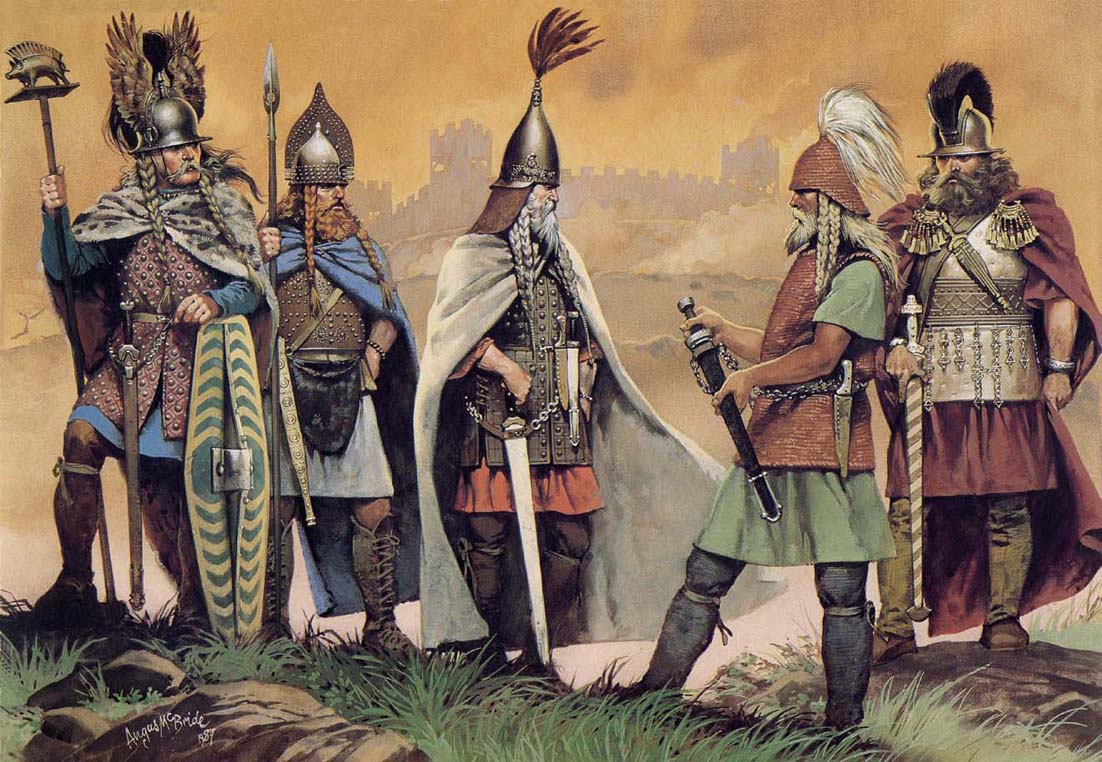
The Celts were glorious warriors and during their existence they seized many lands, giving their equally powerful neighbors much trouble. Time mercilessly reacted to the Celts: constant centuries-old disputes with Rome, victories and defeats led to the fact that the nationality gradually disappeared. The Celts were not only fearless warriors, there were many skilled craftsmen and artists among them.
Even today, the fascination of Celtic symbols knows no bounds. Even if we know comparatively little about the culture and mythology of the Celts, we know their symbols much better. There are few written records. No record comes from the Celts themselves, most of the time we have knowledge of them from the Romans and Greeks. However, these did not really know their traditions. For this reason, the interpretation of Celtic symbols is not always easy.
Furthermore, "the Celts" did not really exist. There were many tribes that shared cultural and linguistic similarities, but regionally there were great differences. Celtic symbols are perhaps so interesting to us for precisely this reason, as they contain something mysterious. However, they are still said to have a special power today. Celtic pendants, earrings and bracelets: today we can find almost everything with Celtic motifs.
The mystery of the Celtic symbols
Celtic art bequeathed us a heritage rich in subtle and varied works, full of complex Celtic symbols. Difficult symbols to interpret, because we do not have the key, being the Celtic culture of oral transmission. Enclosing them in patterned fabrics and ornaments, the warriors showed their worldview, beliefs, and traditions.
Each of the Celtic symbols has its own specific meaning. In the modern world, Celtic ornaments, as well as symbolism, are used in the manufacture of amulets and pendants. According to the traditions of the Celts, it was believed that each individual is part of the World Tree. With him, a person was to meet at the end of his path through all death and rebirth.
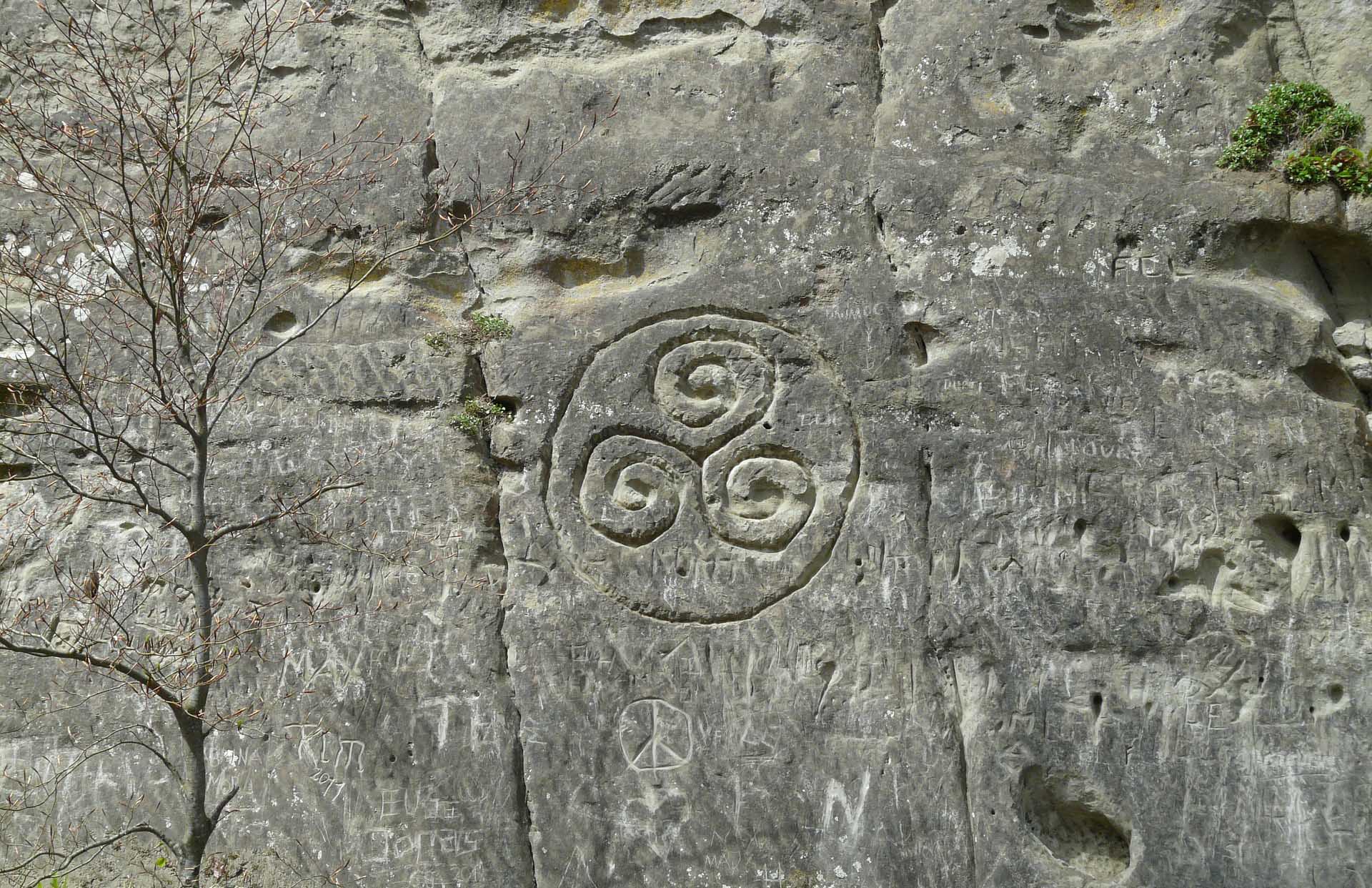
Each Celt chose a special print for the amulet. It was believed that this was his destiny. Each symbol carried in itself separate concepts of health, well-being, power, money, love. All lines of Celtic symbols are fantastically intertwined with each other, folding into one or another ornament.Celtic symbols visually resemble a complex and cunning labyrinth. This is the main idea: a person wanders through life in search of truth and self-knowledge.
The spiral
The spiral is seen as a symbol of expansion and growth. These can be found in many tombs and other finds from the time of the Celts. The spiral is an important Celtic symbol, although its exact meaning is unknown. The spiral is believed to symbolize the way of life. It thus symbolizes the path of our soul in this world. The soul continues to develop on its path, so it grows and strives for knowledge.
Therefore, it is closely related to growth and expansion. If it works clockwise, it also means movement, energy and force. It is found in dolmens and cemeteries not only in Ireland. The spiral was also used by the Celts to represent the sun and its life-giving energy.
the double spiral
The double spiral represents the connection of opposites. It consists of two spirals that have been joined. One runs clockwise, the other counterclockwise. This spiral is supposed to describe birth and death, as well as the path in between. One expands and enters the other spiral. It connects opposites and is often seen as a symbol of balance. It can also symbolize the equinox. The double spiral is one of the Celtic symbols found in many Irish caves and symbolizes the duality of things.
the triskele
This symbol is dedicated to being, becoming and disappearing. It is also a reason for our fascination with Celtic symbols, because their meaning also relates to the life path of each individual person. The trisquel is a triple spiral. So this means that there are three spirals that are connected to each other. As a Celtic symbol, it represents the cycle of life, that is, birth, life itself and, ultimately, death.
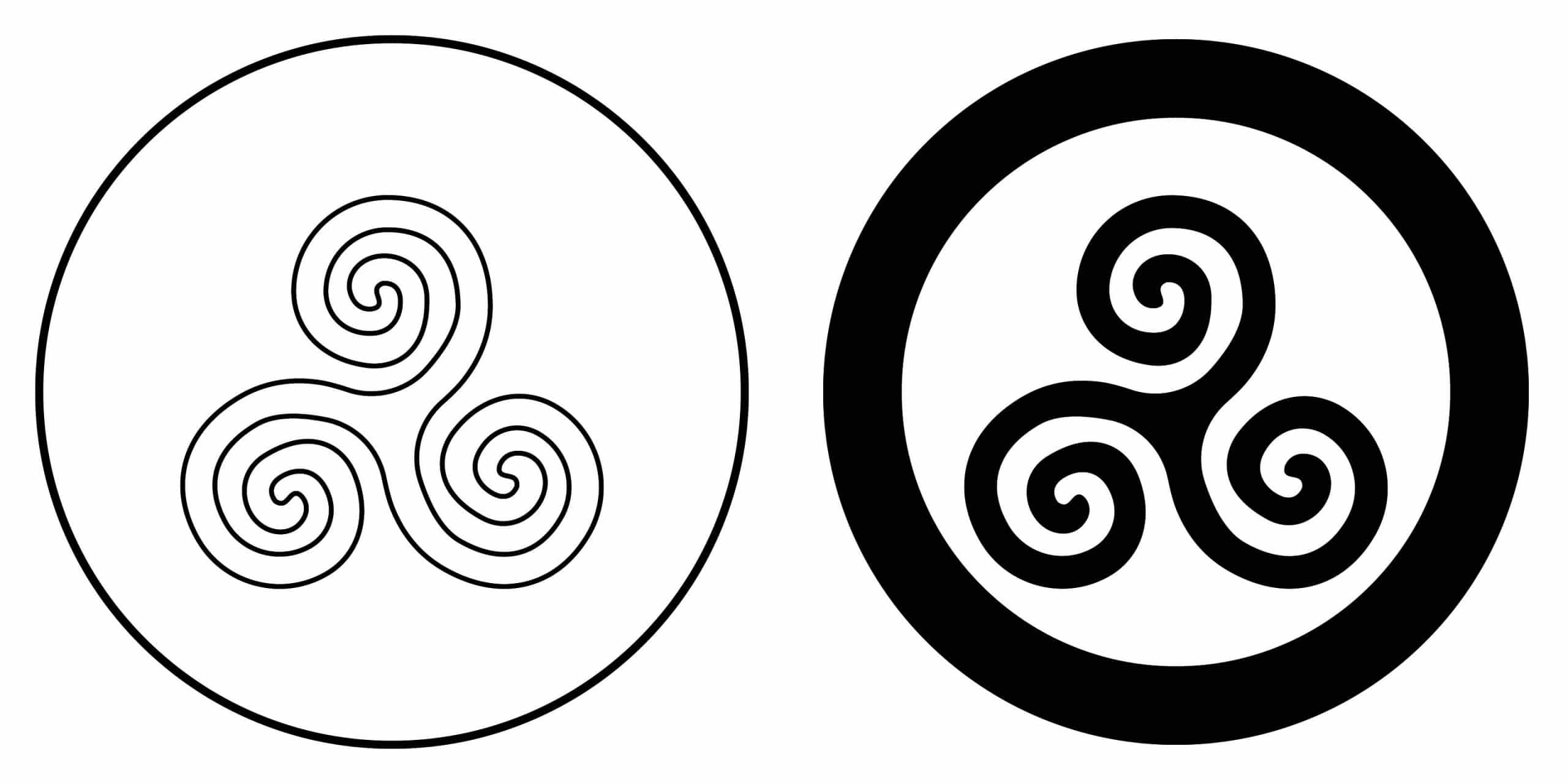
So it is the Trinity that is incarnated here once again. It is about becoming, being, and ultimately dying until one "becomes" again through rebirth. This sign also symbolizes past time, present time and future time. In addition, this sign is an ancient symbol of the druids, which is supposed to embody the triple sister goddess of Celtic culture, (these are Fótla, Banba and Ériu). The trisquel is assigned the number three, which is supposed to represent the trinity.
Moon
The moon was one of the Celtic symbols. Even then, the Celts recognized that the moon influenced events on earth. The way plants grow, ebb and flow, or life itself were influenced by the moon, as was female menstruation. The moon is assigned the number two, which means duality. The moon is a very harmonious and welcome symbol of the Celts and is represented here as a horn. He is seen as the revealer of sacred things.
the wheel of being
The wheel of being, also known as the fivefold pattern, is a Celtic symbol that represents the four cardinal directions, which are connected by a circle in the middle. The symbol consists of four circles that intersect at a certain point and thus result in another circle. This symbol is also a druidic symbol meaning "to be". It represents the four elements: earth, fire, water and air, which come together in the universe.
Triplet
The word Triquetra or Triqueta comes from Latin and means "triangle". These are three arcs that are connected to each other. In some representations, a fourth closed circle is drawn around it. This symbol is thousands of years old and has been used and revered by different cultures. Today it is assumed that the symbol of the Celts was a sign of the unity of the divine. The sign probably symbolizes unity, that is, the integrity of birth, life, and ultimately death.
However, there are also theories that the symbol is supposed to show the classical Celtic elements: earth, air and water. Its original meaning was simply "triangle" and was used to refer to various shapes with three corners. Today it refers to a specific and more complicated shape made up of three bladders, sometimes with a circle added in or around it.

The triquetra is often used in the art of Ireland, especially in metalwork and in prominent manuscripts such as the Book of Kells. The fact that the triquetra rarely stood alone in the Celtic Middle Ages has cast doubt on whether it was used as a symbol in context or primarily as filler or embellishment in more complex designs. But Celtic art lives on as a living folk tradition and through various revivals.
The celtic cross
There are many Celtic symbols, but the Celtic cross is a very special symbol, which is also known as the "cross of life". This symbol is one of the most famous Celtic symbols. It is supposed to symbolize the connection with higher powers. The longitudinal bar of this cross is longer than the cross bar. A circle closes around the intersection. The crossbar should represent its symbolism for this world and the earthly.
The longitudinal bar, on the other hand, symbolically represents the beyond, that is, the spiritual. The circle connects the two worlds. This symbol, which is similar in its basic outline to the conventional Christian cross, has an additional circular ring, the meaning and origin of which are not exactly clear. It is often interpreted as a sun symbol of the Celts, so both Christian and pagan symbolism are used for further explanation.
Unfortunately, the Celtic cross has also been misused as a symbol by racist organizations in the United States and Europe. But back to Ireland: the most impressive representatives of this type of cross are the high crosses, which can still be found in many places in Ireland.
These stone-carved crosses are often richly decorated with scenes from the Bible, which were supposed to represent key points from the Bible in graphic novel fashion (and were probably also used as audiovisual presentations). Interestingly, there are images on some Celtic crosses that don't really fit the Christian context, such as mounted Celtic warriors.
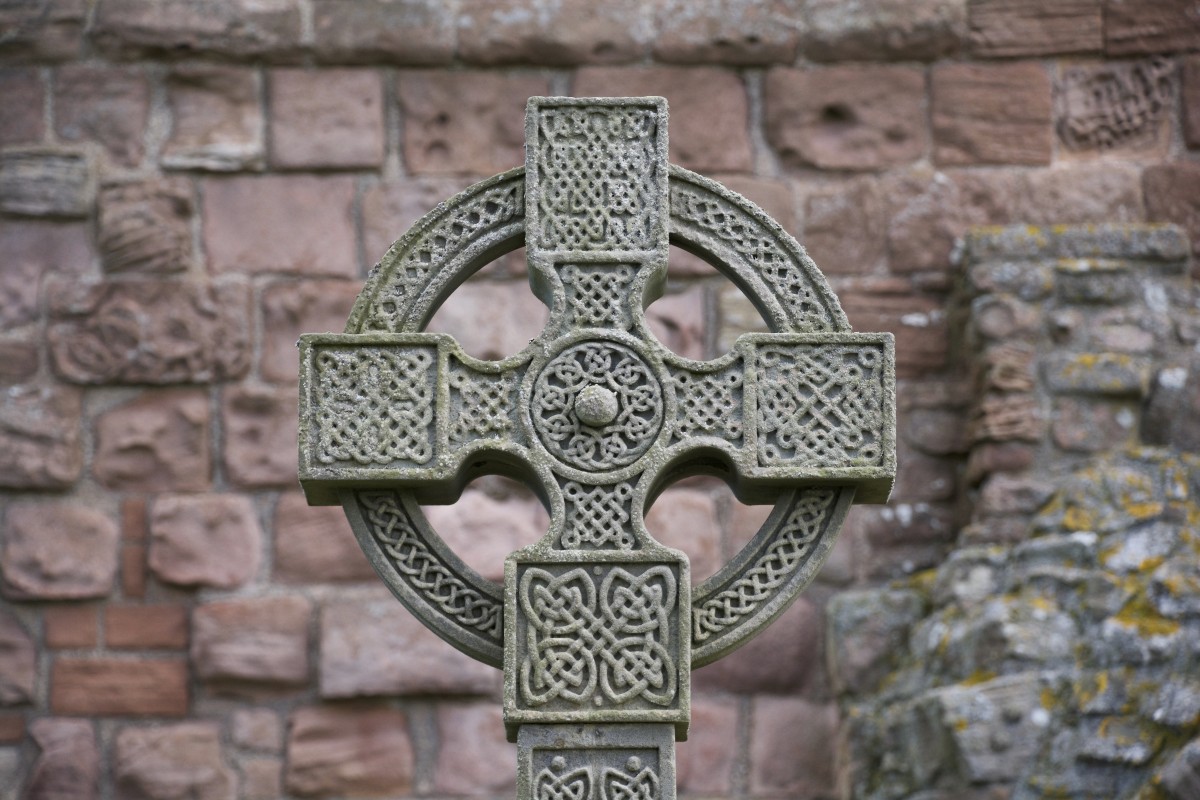
One of the largest collections of high crosses is at Kells, where an unfinished specimen clearly shows the working methods of stonemasons of the time. More modern stone carvings in the typical Celtic cross shape and Irish ornamentation can be found in almost every Irish churchyard.
celtic tree of life
The Celtic tree of life is in connection with the world and the earth goddess through its roots and is therefore supposed to be a symbol of matter. The crown rises towards the sky and therefore represents the spirit. The individual branches represent families, the cohesion and growth of families. So each part of the tree has a fixed meaning.
The cult of trees was an integral part of the faith of the Celts, so it is not surprising that its symbolism is still intact today and can be found in jewelry, for example. Oak groves were once used by Druids to celebrate various rites and initiations, and the leaves or branches were used for magical ceremonies. The tree represents life, if only for its own lifespan, not just for the shape and interpretations of its individual components.
The Celtic Tree of Life should represent hope for a happy future and healthy growth and prosperity. The tree has strength and continues to grow throughout its life. This should also be able to positively influence the fate of people. The tree is therefore a companion to man and must be by his side in all situations. It must provide support and strength, guidance and motivation.
It is not for nothing that many people attribute a soul to an old tree and admire this tree, no matter how ossified it may seem. A small magical ritual has also made itself felt in "non-Celtic" minds: the planting of a tree for the birth of a child or for her baptism. Trees are also often given as gifts or planted at weddings or birthdays.

This expresses the hope of prospering and wishing the recipient a happy future and a long life. The man is said to have the same strength as the tree, and supposedly the fate of the person in question can be read in the fate of the tree.
Celtic knot
Typical knot patterns, which were not only used by the Celts, but also generally in the Middle Ages as symbols or in crafts, are called Celtic knots. A Celtic knot is a braided ribbon pattern that must meet very specific requirements. Therefore, there is always a basic geometric pattern, which is based on spirals, braided patterns (endless knots), labyrinths or even animals and which represents the core of each Celtic knot.
Almost all the symbols used in the Celtic knot can be connected and combined with each other as desired. Every Celtic knot has a basic pattern that repeats continuously within the knot. Each node is based on a flat graph, which represents the clear starting point of the respective node. From this graph in the center, the rest of the node is built up evenly.
The cloverleaf loop can be named here as the simplest construction example for a Celtic knot, because it is built on a simple triangle. The meaning of the Celtic knot is still the subject of heated debate and speculation today.
While some are of the opinion that the knots have a purely artistic character and were designed only for optics, others are firmly convinced that each individual knot has a deeper meaning and must convey certain characteristics. Not surprisingly, the Celtic knot can still be found today in a wide variety of designs, for example as jewelry, but also as an ornament of the Celts, for example on tombstones.
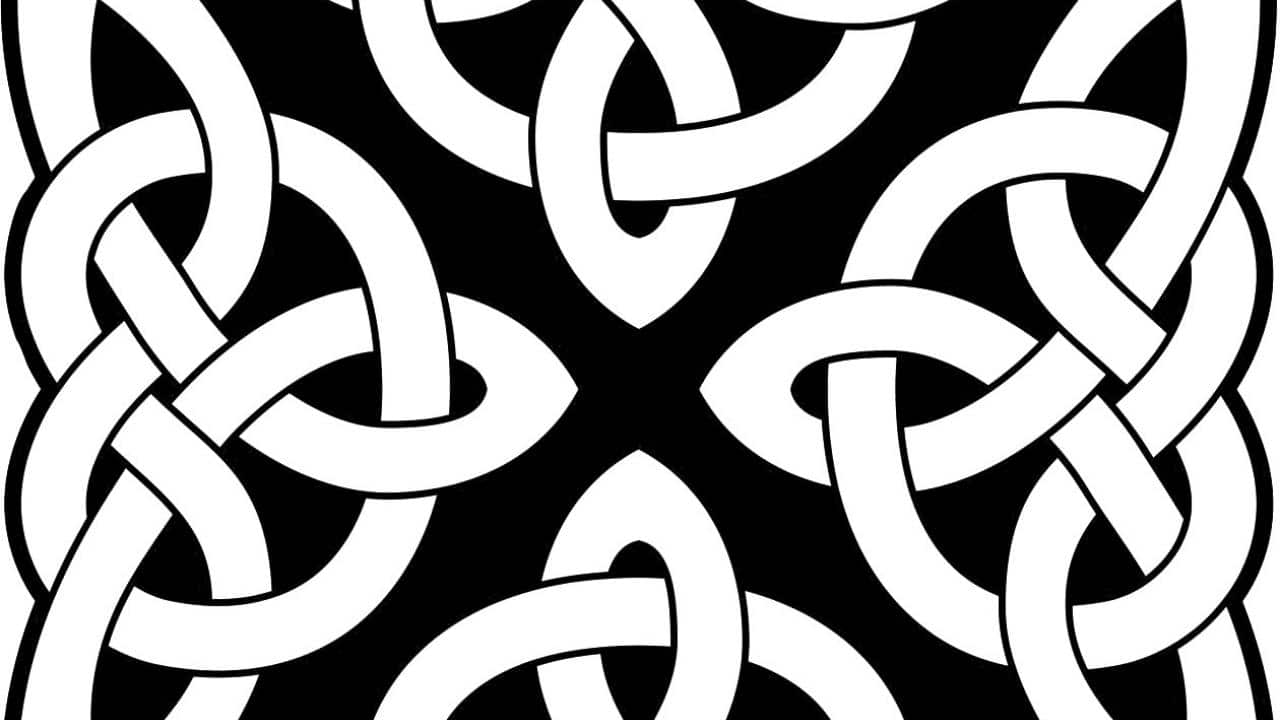
Some also claim that a Celtic knot is meant to represent the human soul's link to the world and man's endless spiritual process. Once this process is complete, one should be able to break free from the eternal cycle of rebirth.
wheel cross
The wheel cross, also the sun cross or sun wheel, is a motif of iconography from Norse prehistory. It is a circular wheel, whose spokes form a cross that divides the circle into four equal areas. The motif appears as petroglyphs, such as the Allinge-Sandvig rock carvings, and on the roof stones of large stone tombs, but mostly in finds from the Bronze Age.
On the one hand, the cross of the wheel is an image of the sun or the solar disk. On the other hand, according to the Danish archaeologist Flemming Kaul, it can be interpreted as a symbol of the day-night cycle and the cycle of the seasons. In Egyptian representations, "four-spoked wheels" appear on the chariots, resembling the cross of the wheel. This form is technically unmanageable and therefore only symbolic. In the Middle Ages it was used as a consecration cross in church buildings.
In the free interpretation of the cross of the wheel as a representation of the cyclical course of the sun's movement in the day-night rhythm, the horizontal transverse strut represents the earth as a disk. The upper semicircle shows the sun's path during the day, from morning sunrise (left intersection) over noon to sunset (right intersection).
The lower semicircle represents the sun's path through the underworld at night. When applied to the cycle of the seasons, sunrise equals spring, midday equals summer, sunset equals autumn, and midnight equals winter.
Sheela Na Gig
Sheela Na Gig is a figurative carving of nude women showing an exaggeratedly open vulva. They are located in churches, castles and other buildings, especially in Ireland and the United Kingdom. This figure must represent a relic of pagan beliefs, generally Celtic, that were incorporated into the new Christian church.
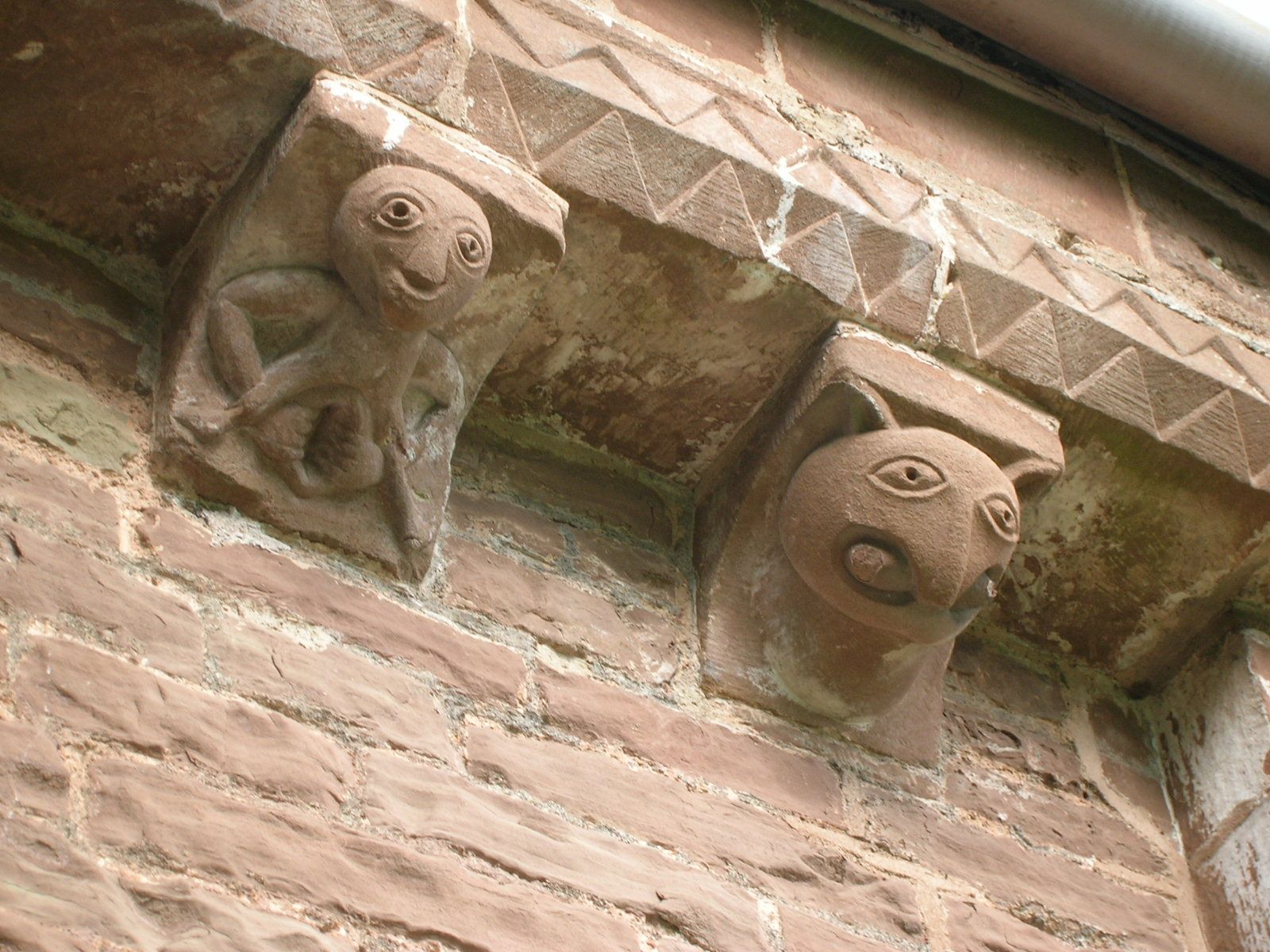
The name was first published in the writings of the Irish Royal Academie 1840-44 as the native name of an ornament once found on a church wall in Rochestown, County Tipperary, Ireland; the name was also recorded in 1840 by John O'Donovan, an Irish artillery officer in relation to a figure in a church at Kiltinane, County Tipperary.
There is controversy over the origin and meaning of the name, as the name does not translate directly into Irish. Alternate spellings for "Sheela" are sometimes found, including Sheila, Síle, and Síla. The name "Seán na Gig" was introduced by Jack Roberts for the ithyphallic male counterpart of the Sheela, which is very rare in Ireland but much more common on the Continent.
Celtic clover symbol
It would seem that the origins of the clover are lost in antiquity. Legends suggest that Saint Patrick plucked a shamrock from the Irish soil to demonstrate the meaning of the Trinity: Father, Son and Holy Spirit. The plant was believed to have a mystical power in that its petals stand erect, warning of an approaching storm.
The clover is also commonly associated with the symbol of good luck. Studying Celtic history, scientists discovered that clover was a spell to ward off evil. The shamrock remains Ireland's most famous symbol.
Celtic shield symbol
Celtic Shield Knots can be identified as any of the Celtic Knots with four different corner regions. They usually resemble a square, but are sometimes a square-shaped emblem within a circle. As with all Celtic knots, there is no beginning and no end.
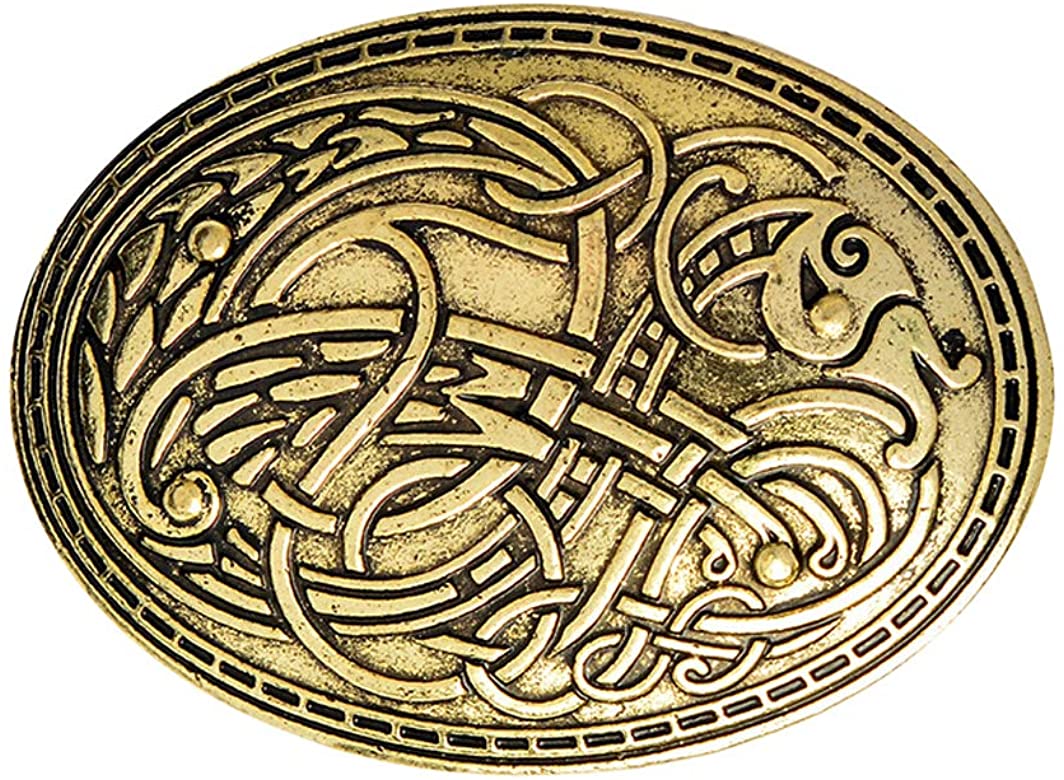
The idea of the Celtic shield knot comes from civilizations older than the Celts. Since ancient times, it has been a well-known symbol of protection against danger and warding off evil spirits. The symbol always has a fourfold base, but within the framework of a larger unity.
Taranis Wheel Glyph
In Celtic mythology, Taranis was a god of thunder who was worshiped primarily in Gaul, the British Isles, and the Rhine and Danube regions, among others. Many images of a bearded god with a thunderbolt in one hand and a wheel in the other have been found in Gaul, where apparently this deity was associated with Jupiter.
The Taranis wheel, more precisely a chariot wheel with six or eight spokes, was an important symbol in historical Celtic polytheism, apparently associated with a specific God known as the God of the Wheel, identified as the sky, the sun, or the god of thunder, whose name is attested as Taranis by Lucan. Numerous Celtic coins also depict such a wheel.
Claddach Symbol
The Claddagh ring is a traditional Irish ring given as a sign of friendship, love or marriage. The design and the customs associated with it originated in the Irish fishing village of Claddach, located near the city of Galway. Elements of this symbol are often said to correspond to qualities such as love (heart), friendship (hands), and loyalty (crown).
Here are some links of interest: